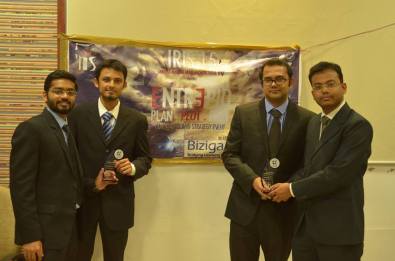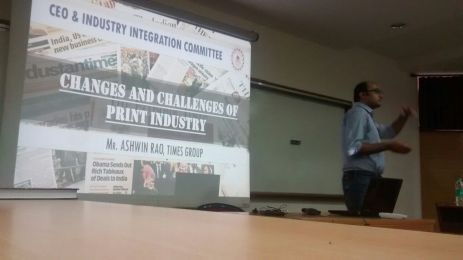Entrepid was a combination of four different rounds, the first two being qualification rounds for the next rounds. The first round was an online management quiz round, which was hosted on dare2compete.com. It was a fun round, with questions varying from Marketing to Strategy and Business to M&As, putting our management concepts to test. We had to answer about 30 questions in 30 minutes, and the fastest teams won.
We were shortlisted for the second round, which was a case study round. The deliverable for this round was a 5-slide powerpoint submission of the case analysis. The case was about an imaginary company Indore Engineering Works (IEW), a machine tool company and the strategies that it followed. We had to analyse their operations and suggest strategies for their operations and finance. This was a little unexpected as this industry is not a very glamorous one, and not many cases and information are easily available. We based our research on the existing companies in India, especially ITL, which is one of the most successful companies in this industry. Learning about a new company and a new industry was definitely the highlights for us, as our aim to participate in the competition was to learn something new. Getting selected subsequently was an icing on the cake.
Top six teams were shortlisted for the final rounds – 4 from IIM Indore, 1 from IIT Kharagpur and us. The final part had two rounds and was to be conducted on their campus. The first round was an online business simulation game, which tested our strategy execution skills. This was definitely one of the best rounds and an exciting one too. Our experience of having worked on Capsim, in the subject Decision Analysis By Simulation, helped us tremendously; we beat the other teams by a huge margin.
The last round was the presentation of the case that we had submitted, in front of two Strategy professors from IIM Indore who were the judges for the events. We had not put much time into our research and that showed in our presentation. We missed being the winners by a whisker; a little more effort and time would have clinched the trophy for us.
Our slides and presentation was well appreciated; again the result of learning some good tricks in the subject Business Communication. Uncluttered yet having all relevant information, simple yet captivating – we feel these are some basic requirements of a powerpoint submission. It’s an all-round effort of good research and essential insights coupled with a good presentation that can take you all the way through.
Entrepid was a very fascinating combination of different kinds of rounds – quiz, case study, simulation and presentation, culminating in one winner and one runner up. And a simple mantra that we follow when we participate in competitions: “Go with an open mind to learn something new. You will enjoy it.”
Submitted by: Team SParK
Priyansh Maru
Kaushal Kapadia
Srijon Sil








